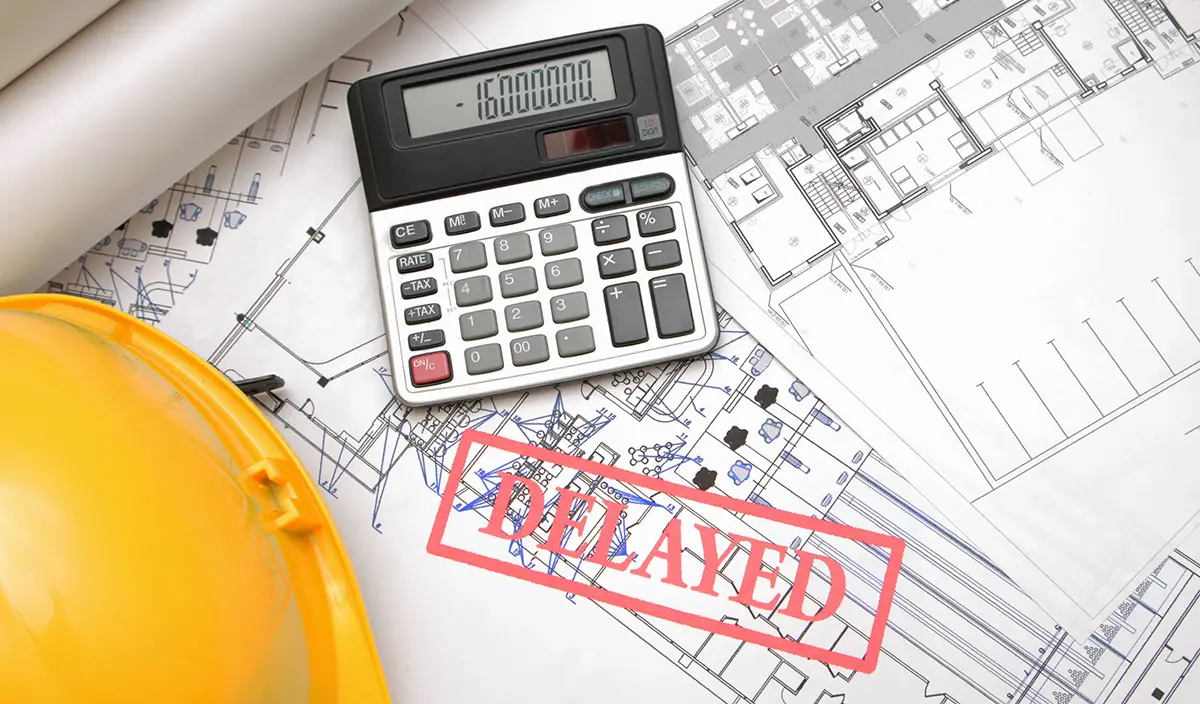
In the construction industry, unforeseen issues in the original contract or drawing set are almost inevitable. Design addenda and RFIs are common, with over 87% of construction projects experiencing changes that lead to delays or cost overruns. These delays can significantly impact project budgets, leading to costly contractual disputes, strained stakeholder relationships, and potential loss of future business.
What’s truly exciting for both developers and contractors is the emergence of real-world, applicable, and proven AI technologies. Contractors, in particular, have increasingly become early adopters of preconstruction software and services in response to the inherent risk on projects. The continuing focus on innovation in the preconstruction process has helped limit avoidable impacts before the construction phase even begins. In this article, we explore how advancements in AI can help address potential project delays and achieve more successful project outcomes.
Early Planning & Prevention
Experts unanimously agree that investing time in early planning and prevention is crucial for successful construction management. Identifying potential causes of delays and mitigating their impacts is essential, as even a small delay can have serious consequences that affect the entire project.
Importantly, resolving the issues that can cause delays or cost increases during the preconstruction phase before estimating, bid, procurement, and scope buy-out can go a long way in mitigating those risk factors that lead to construction delays when not addressed early.
While unavoidable risk factors like weather events, natural disasters, vandalism, and other unforeseen issues can lead to project schedule setbacks, many types of construction delays are avoidable. These include:
- Rework caused by incorrect, late, or incomplete design information
- Drawing misinterpretation, mistakes, and miscoordination from plans that don’t match or contain conflicting information
- Scope creep or owner/client changes requiring rework, additional resources, and/or materials and equipment
- Increased numbers of RFI that require research and review
- Multiple iterations of submittals for approvals
- Contract disputes that lead to work stoppages
- Material or labor impacts due to resource planning changes
- Communication lags between project stakeholders
There are many construction software solutions focused on AI-powered efficiency, productivity, and risk mitigation that can greatly enhance your preconstruction process. From estimation, take-offs, and procurement tools to design review and scheduling, resources are available to supplement your teams.
Focusing specifically on advancements in AI design review, a biggie, let’s look at the potential delay factors that can be anticipated, mitigated, or eliminated entirely.
INCORRECT, LATE, OR INCOMPLETE DESIGN INFORMATION
As seen in a recent article on avoiding construction disputes, the top causes of project distress had their roots in changes in scope and incomplete designs. In fact, three design-centric factors – incorrect, late, or incomplete design information – afflicted a greater proportion of projects overall (44.8%) than scope change alone (38.8%).
Project teams are engaged in the build process earlier today than they were in the past, working from documents in design. Not optimal, from a risk standpoint, when developing budgets and schedules and trying to beat supply chain shortages and delays with expeditious procurement.
Contractors place a high value on identifying potential project issues and gaining the greatest possible project clarity before handoff to the construction team. Leveraging AI to supplement their critical design review process has been a game changer for those leaning into the advancing technology.
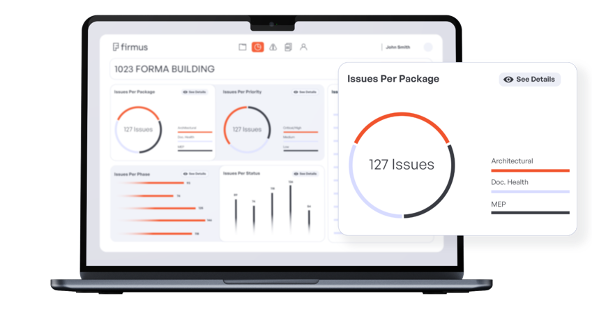 Cloud-based AI design review tools can provide meticulous analyses of PDF document sets and identify issues such as missing information, discrepancies, scope gaps, and cross-discipline checks in a matter of hours. The efficiency gains alone are remarkable, as manual review processes can take weeks.
Cloud-based AI design review tools can provide meticulous analyses of PDF document sets and identify issues such as missing information, discrepancies, scope gaps, and cross-discipline checks in a matter of hours. The efficiency gains alone are remarkable, as manual review processes can take weeks.
Preconstruction and Quality teams can then focus on the assessment and mitigation of the identified risks, rather than combing through hundreds or thousands of sheets, enabling faster, better decision-making and greatly increasing the likelihood of a successful project outcome.
SCOPE CREEP
Scope creep occurs when new, different, or additional work is requested that was not contained in the original approved plan set, especially continuous changes. Not having a clear project scope will inevitably lead to serious delays. Over time, these delays add up to significant schedule overruns. Each time new or additional work is requested, it needs to be reviewed, estimated, and approved, and new materials and/or additional labor must be procured.
Scope creep affects a project in many ways. It extends the project timeline, delays certain milestones, sets back scheduled work activities, and contributes to budget overruns. Procuring additional items with little or no lead time results in higher costs.
Developers feel this pain as well, facing inflated project expenses due to extended construction financing and staff costs, which are time dependent. Any significant delay can lead to adjustments in labor, wage, and material prices, which can occur every 6 months to a year.
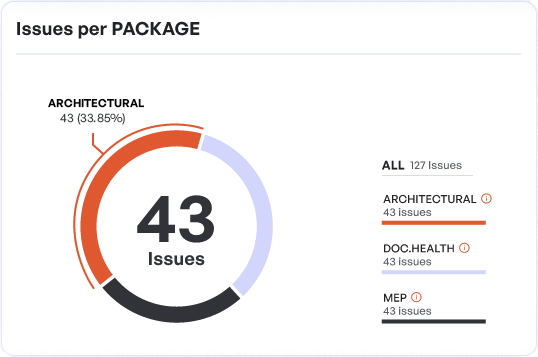 Consider the number of missing or incorrect tags alone remaining in an average 50% CD set. AI design review tools can help reduce the occurrences of scope creep by eliminating project vagaries that can leave the door open for interpretation or change. The more clarity that can be gained on project deliverables before the work begins, the more likely you are to prevent scope creep.
Consider the number of missing or incorrect tags alone remaining in an average 50% CD set. AI design review tools can help reduce the occurrences of scope creep by eliminating project vagaries that can leave the door open for interpretation or change. The more clarity that can be gained on project deliverables before the work begins, the more likely you are to prevent scope creep.
PROCUREMENT AND BUDGET
When materials, labor, and other resources (and their associated costs) are estimated accurately in the preconstruction phase, it helps prevent delays due to shortages later. AI design review tools can identify missing, conflicting, or incomplete information, helping estimators ensure that all information is available and up to date. This helps avoid downstream cash flow issues or long waiting times for additional materials.
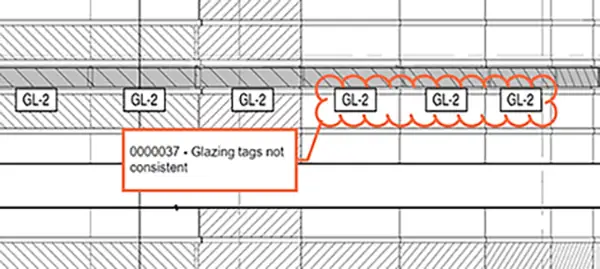 Even something seemingly minor like discrepancies between tags and schedules can have a major impact if not caught early. Cost miscalculations from missing, vague, or incorrect design information delay construction projects every day, impacting:
Even something seemingly minor like discrepancies between tags and schedules can have a major impact if not caught early. Cost miscalculations from missing, vague, or incorrect design information delay construction projects every day, impacting:
- Tariffs and Material Prices
- Storage and Equipment Fees
- Labor
- Subcontractors
Though all project budgets factor in a contingency to buffer the overall cost, delays can easily consume this financial padding. According to the Project Management Institute, organizations waste an average of $97 million for every $1 billion invested due to poor project productivity and management.
COMMUNICATION AND COLABORATION
Successful projects depend on and foster high-quality communication and collaboration among all project stakeholders. Whether during the design or build phase, lack of communication and careful planning is the single most prevalent cause of project delays in construction. Here are two real-world examples:
- An MEP oversight related to the pipe diameter — based on the number of plumbing fixtures and distance from the water main in a commercial building — leads to a 10-day delay between the completion of plumbing and scheduling the inspection, delaying drywall, trim, etc.
- The client makes a change to the bathroom tile early in the project, but the designer fails to provide updated drawings or notify the preconstruction manager, and the wrong tile is purchased and installed
When the right hand isn’t talking to the left hand, projects get delayed. A lack of coordination and collaboration among project stakeholders can result in miscommunication, rework, delays, disputes, and, in some cases, reputational damage. In these cases, communication and collaboration audit trails come in very handy.
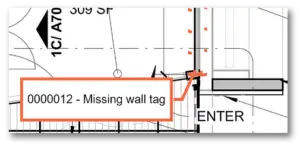 AI design review tools, especially those designed by construction industry experts in collaboration with architects, can provide clear document markups with the supporting context needed to quickly and easily review the identified issue(s). These expert markups, combined with drawing overlays where applicable, make the RFI review, response, and resolution easier for everyone involved.
AI design review tools, especially those designed by construction industry experts in collaboration with architects, can provide clear document markups with the supporting context needed to quickly and easily review the identified issue(s). These expert markups, combined with drawing overlays where applicable, make the RFI review, response, and resolution easier for everyone involved.
These tools provide clarity and improved decision-making by keeping all parties informed about the issues detected, RFIs submitted and their status, issue mitigation assignments, and ongoing results. Firmus, for example, includes unlimited users in their Enterprise plans to encourage deeper collaboration and transparency between owners, designers, contractors, and other relevant stakeholders.
The Role of Technology in Creating Clarity and Efficiency
The sheer number of avoidable causes of delays necessitates the criticality of thorough early design review to avoid the risk of delays, rework, and legal disputes—significant sources of project and budget breakdown.
Even the most proactive precon teams can get stymied by the massive volume of multi-discipline documentation requiring review at evermore truncated timelines. Utilizing AI to support and supplement these teams is a no-brainer.
A 2024 IFS Construction & Engineering report predicts that 90% of construction companies will simplify their business system landscape with cloud-based technology in the next 5 years, and 30% of companies will deploy AI and Automation within the next 3 years. Preconstruction AI is making huge strides in increasing productivity, resource optimization, employee satisfaction, and retention for contractors, architects, and owners.
It’s no secret that excessive administrative work, including document review and prolonged RFI response waiting times, are commonly overlooked factors contributing to Preconstruction and Quality Manager fatigue. Professionals join the construction sector to make impactful contributions, not to be ensnared in endless minutia. By embracing a data-driven approach, construction teams can focus on the more strategic aspects of project design and constructability. The natural result is higher project quality, cost-controlling, and clarity—advancing the construction process and recruiting the best talent for successful project completion.
While no construction project is completely immune to delays and setbacks, mitigating avoidable delays is crucial. Adopting technology like Firmus AI allows organizations to quickly identify potential issues and address them proactively, streamlining processes, improving efficiency, and minimizing delays.
